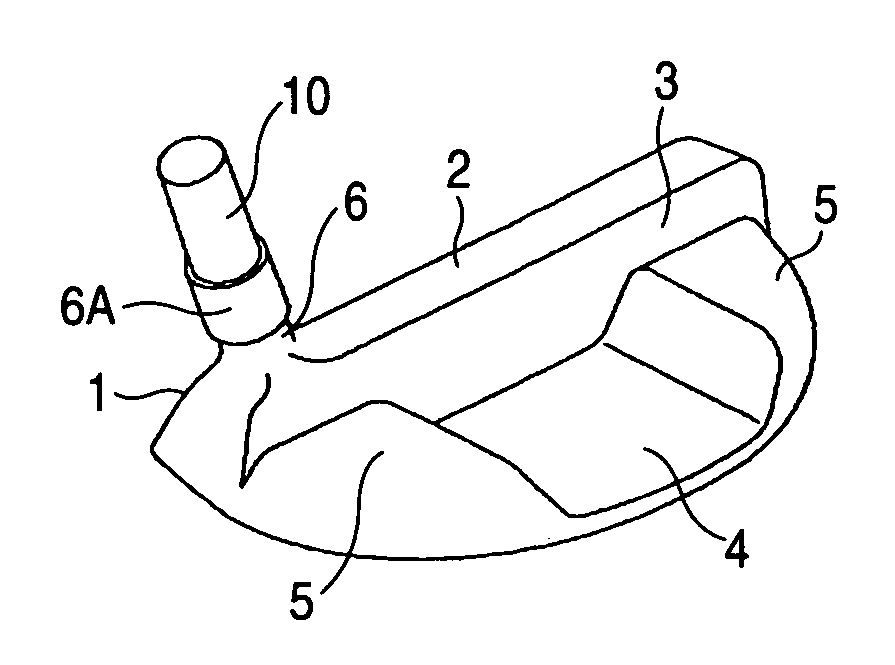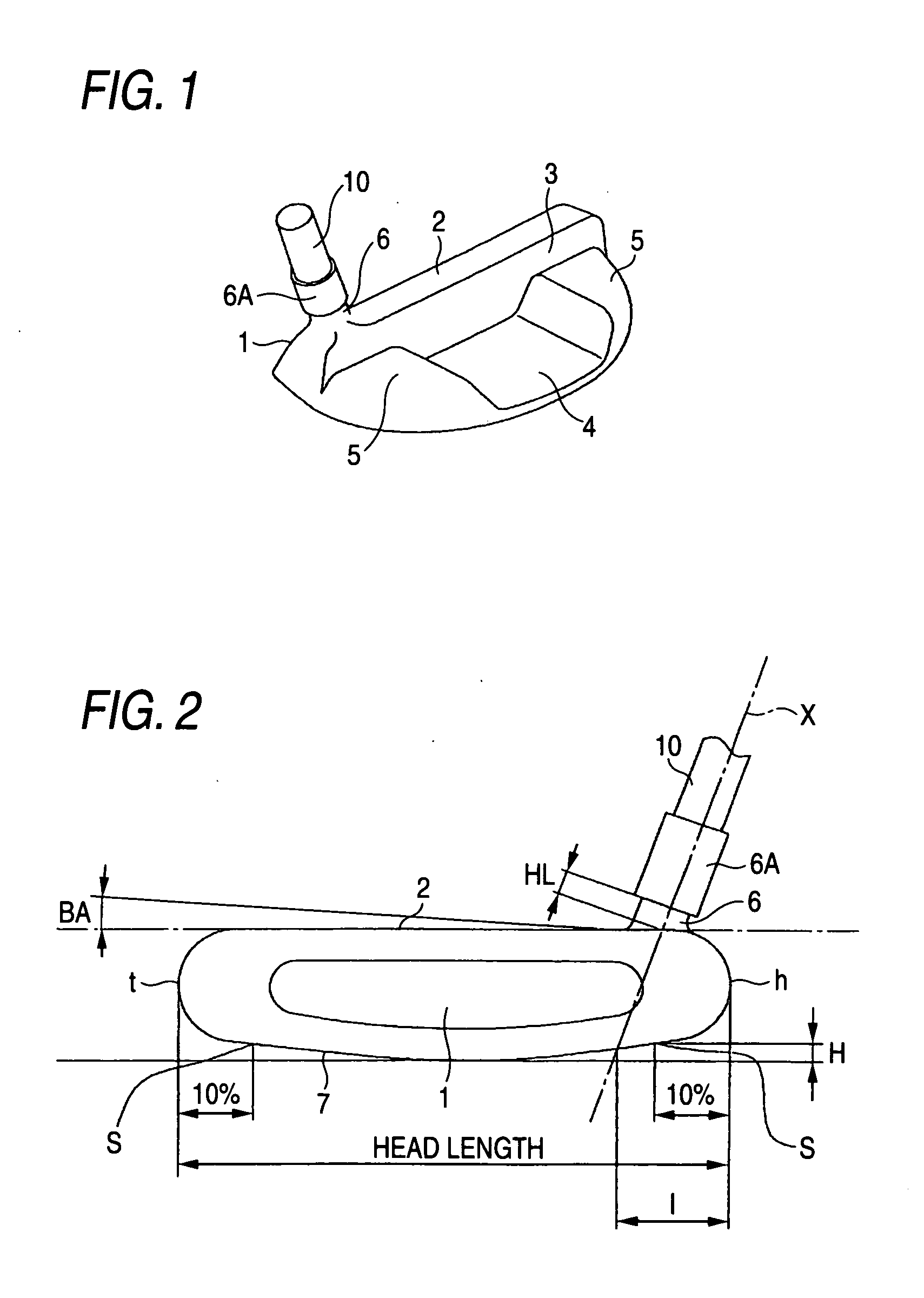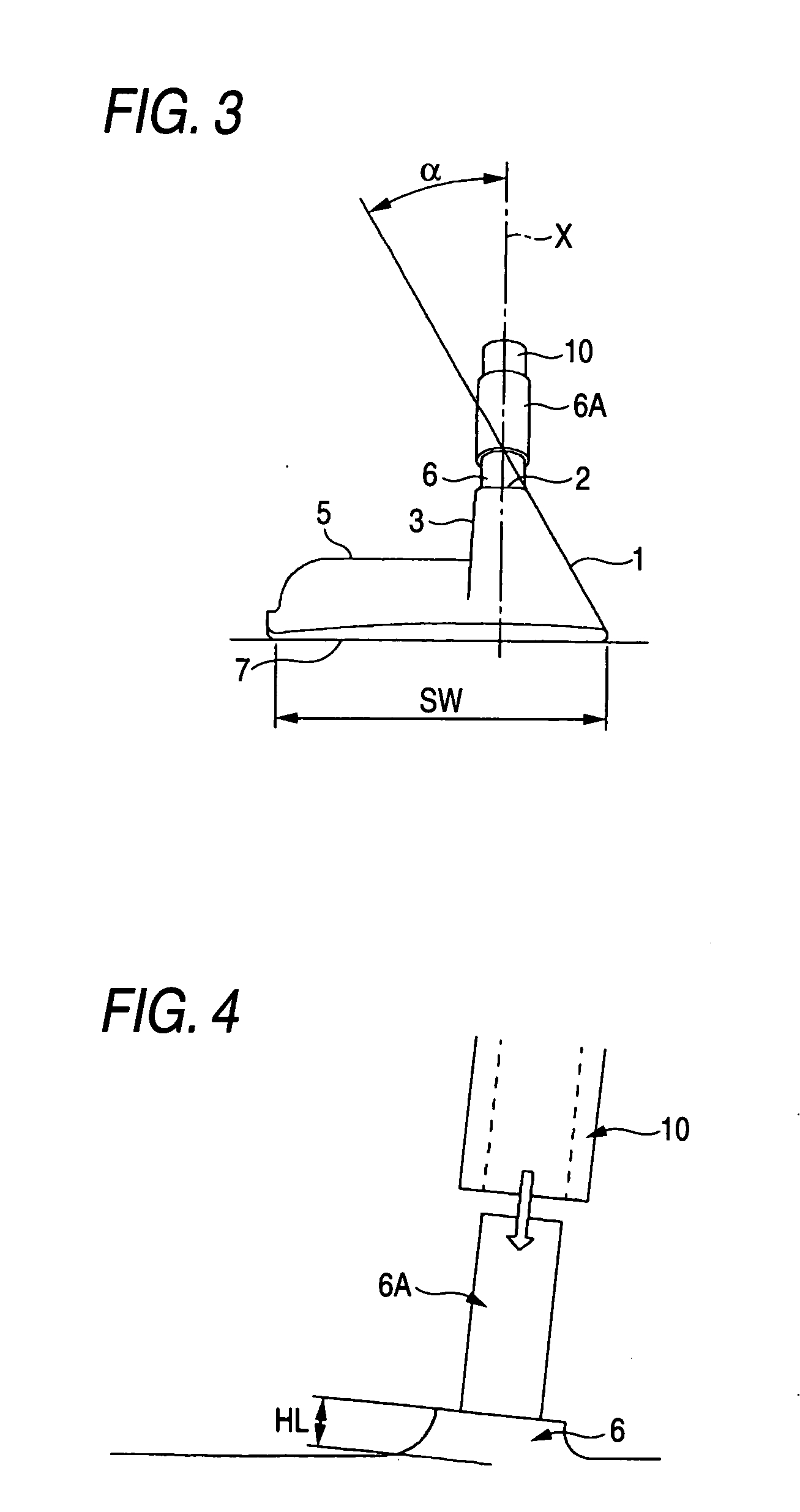Golf club head and golf club
a golf club and head technology, applied in the field of golf clubs, can solve the problems of not allowing a player to swing, difficult to hit the ball at the sweet spot and obtain a stable distance, and the center of gravity of the head is deep and cannot, so as to increase the stability, and reduce the probability of duffing.
- Summary
- Abstract
- Description
- Claims
- Application Information
AI Technical Summary
Benefits of technology
Problems solved by technology
Method used
Image
Examples
Embodiment Construction
[0018] Embodiments of the invention will be hereinafter described with reference to the drawings.
[0019] As shown in FIG. 1, a golf club head includes a hitting face 1, a top blade 2, a back face 3, a semicircular plate-like portion 4, which extends rearward from the back face 3, thick portions 5, which are disposed on the plate-like portion 4 on the toe side and the heel side thereof, and a neck portion 6 and a hosel 6A, which are provided on the top blade 2 for insertion and attachment of a shaft 10. The thickness of the top blade 2 (in the front-rear direction) is in a range of 10 mm to 25 mm. The bottom surface of the plate-like portion 4 forms a sole face of the golf club head. The contour of the sole face (plate-like portion 4) has the semi-circular shape as described above, and has a curvature radius of 300 mm or more. The height of the thick portions 5 is approximately a half of that of the top blade 2 to lower the center of gravity. The two thick portions 5 keep toe-heel ba...
PUM
 Login to View More
Login to View More Abstract
Description
Claims
Application Information
 Login to View More
Login to View More - R&D
- Intellectual Property
- Life Sciences
- Materials
- Tech Scout
- Unparalleled Data Quality
- Higher Quality Content
- 60% Fewer Hallucinations
Browse by: Latest US Patents, China's latest patents, Technical Efficacy Thesaurus, Application Domain, Technology Topic, Popular Technical Reports.
© 2025 PatSnap. All rights reserved.Legal|Privacy policy|Modern Slavery Act Transparency Statement|Sitemap|About US| Contact US: help@patsnap.com



